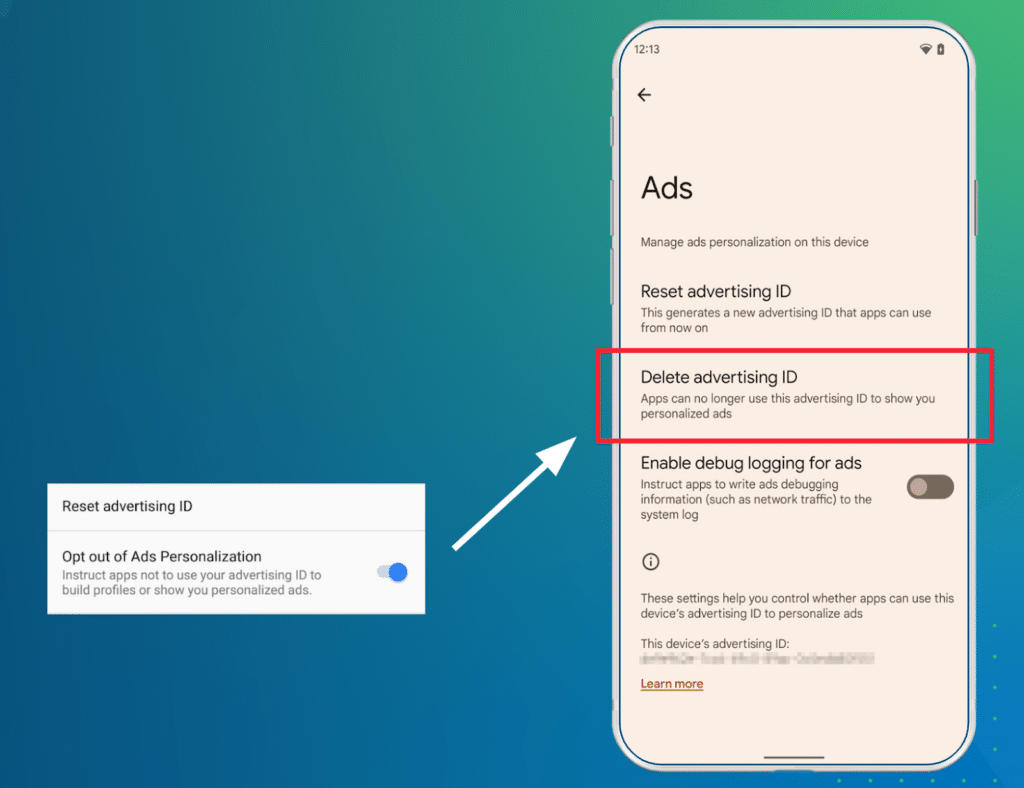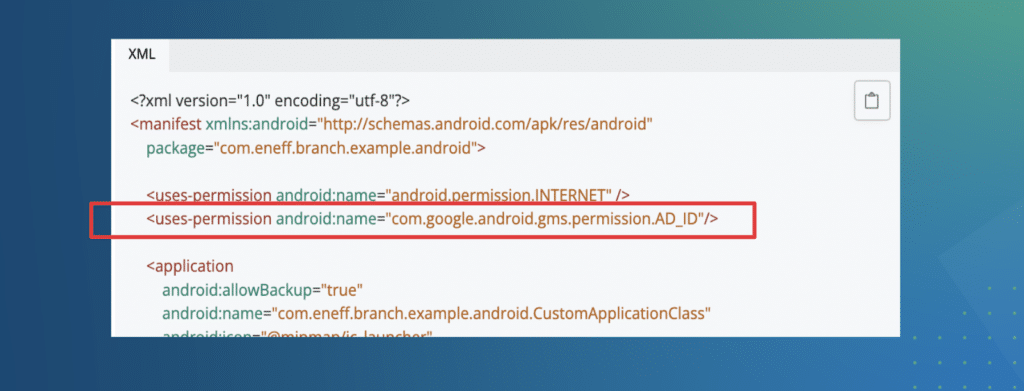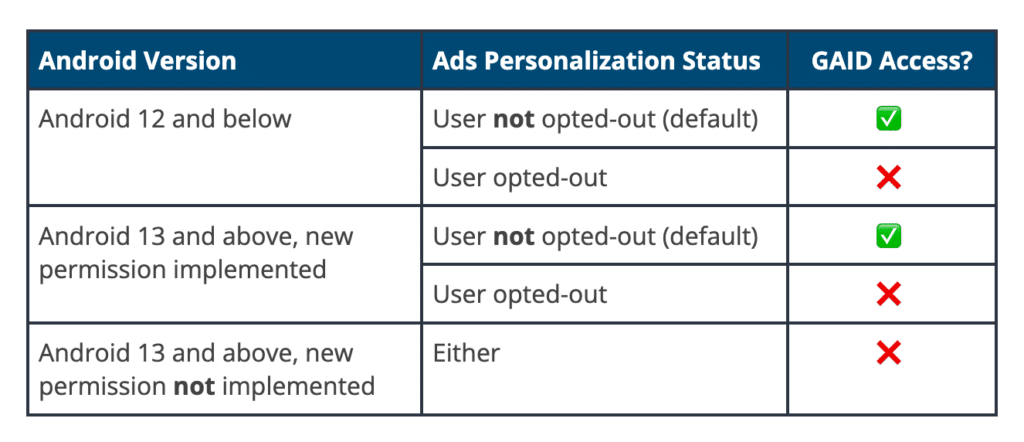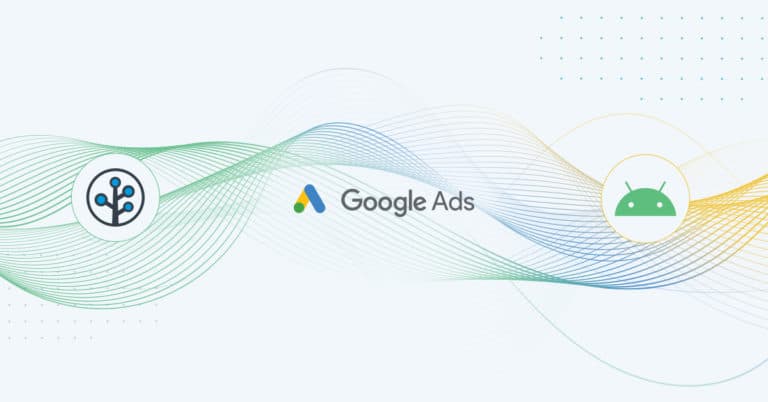Just as we thought the dust had settled on GAID-related access for Android 12, Google recently updated their documentation. In the new version, they revised an earlier announcement around enforcing the AD_ID permission for continued GAID (Google Advertising ID) access on Android 12. In a nutshell, the updates we noted earlier this year are now applicable only to Android 13 — not to Android 12 — even though Android 13 is not widely available yet.
We will dive into the technicality of this revision later on in the blog post, but this is a good reminder of how transient attribution methods are on leading mobile platforms like Android. Staying abreast of these changes is challenging.
Advertisers are making critical decisions on their Android campaign strategy for 2022, and many more changes are coming. In this post, we’ll look at the current Android 12 privacy landscape and predict how it impacts ad attribution on Android for the coming year.
In this post, we will cover:
- The loss of access to GAIDs
- Why reliable methods for attribution (including probabilistic) still exist
- The Google Play Install Referrer
Note: if you wish to learn more about the Android Privacy Sandbox announcement from February 2022, read our overview or watch this webinar.
GAIDs and Android attribution: a brief journey
It’s almost impossible to discuss Android attribution this year without bringing up GAIDs. In early June last year, Google announced limits to GAID access as one of the significant privacy changes to come with Android 12.
What are GAIDs?
GAIDs are a unique, user-resettable ID for advertising provided by Google Play services. Before the existence of GAIDs, the mobile app world had no equivalent to web “cookies”. Also, unlike cookies, which often have a limited shelf-life, GAIDs were semi-permanent device identifiers. They don’t change unless users specifically take action in their Android device settings.
GAIDs helped apps control advertising targeting and attribution better with a simple, standard system. They provided accurate measurement, personalized user experiences, and increased ROI on Android. Prior to GAID, advertisers often used more persistent device IDs (e.g., the Android ID) to identify unique devices, which was clearly an issue for user privacy.
GAIDs vs. Android ID
The main difference between GAID and Android ID is that users can opt out of personalized ads and also reset their GAID, which provides greater consumer choice and privacy than a permanent device ID. Without a doubt, the introduction of GAIDs was a big win for end-users of Android without being too disruptive for advertisers.
Controls that users already enjoyed before Android 12
After the introduction of the GAID, Android users could opt-out of personalized ads on their devices by going into their Settings > Google menu > Ads and flipping the toggle. Like the original Limit Ad Tracking (LAT) setting on iOS, the default mode was off and there was no compulsory prompt to notify users of their privacy options. Under the hood, the GAID value was still available for use in attribution, fraud protection, and analytics, but came accompanied with a flag indicating the user’s opt-out preference for ad targeting. So in a nutshell, user devices would be flagged but GAID access would not be denied.
Check out our earlier blog post for additional context on how these limits to ad tracking on Android worked.
What changed about GAID access with Android 12?
Two changes to GAID access were announced when Android 12 was introduced. One change is now only applicable to Android 13, after Google’s recent documentation update.
First change: Apps can no longer access GAIDs of opted-out users, even for attribution

- In the past, when Android users opted out of personalized ads, their GAID was still available but could not be used for ad targeting or retargeting.
- GAIDs will now be 100% zeroed out when users opt-out of ads personalization on Android.
- This was initially rolled out to users on Android 12 in late 2021, and it is coming to Play Store Services on all versions of Android on April 1, 2022.
- This way of limiting GAID access brings Android to parity with Limit Ad Tracking on iOS from a few years ago.
Second change: Technical update is required to continue collect GAIDs

- For apps that target Android 13, a technical change is also required to collect GAIDs beginning April 1, 2022, even for users that do not opt-out of ads personalization.
- This technical change is a new user permission that must be included in the app’s manifest file.
The timeline of this second change is now even more confusing, due to a last-minute change by Google on March 14. While the original deadline for implementation of the new permission is still April 1, 2022, the targeted Android version that the new permission applies to has since been changed to Android 13 rather than API 31 (which corresponds to Android 12). At the time of writing, Android 13 is still in Developer Preview (Beta), which means the vast majority of brands will not yet be targeting this version of Android by April 1 and now have more time to implement the new AD_ID permission.
For Branch customers, we recommend taking either of the following actions prior to the release of Android 13:
Option 1
| Either upgrade your Google Mobile Ads SDK (play-services-ads-identifier) to Versions 17.1.0 and above, as this automatically merges the AD_ID permission, allowing apps to continue properly ingesting the GAID. |
OR
Option 2
| If you prefer not to update your Google Mobile Ads SDK at this time, you may explicitly declare the new AD_ID permission in your app’s manifest file as shown in the example above. |
There are many reasons to remain optimistic about attribution on Android
First of all, the impact of these changes is expected to be incremental and over time. This is a wide departure from how sudden and massive the AppTrackingTransparency changes were on iOS 14. While the ultimate future of GAID after Android Privacy Sandbox is still unclear, it’s not disappearing immediately.
The table below summarizes GAID access after these two changes have been rolled out:

The Install Referrer Revisited
For campaigns aiming at Android installs via the Play Store, the Play Store Install Referrer provides a promising alternative for deterministic attribution. Indeed, the Install Referrer has been helping fill gaps in attribution for a few years now, and this is a good time to recap what it does and remind ourselves of its continued utility.
When GAIDs were freely available everywhere, the Install Referrer was often redundant for attribution but still useful for fraud prevention. However as GAIDs get deprecated wholesale and privacy becomes a bigger consideration, the Install Referrer is getting more attention. The future of Install Referrer after Android Privacy Sandbox is unclear, but it still offers a reliable solution for attribution today.
The Play Store Install Referrer is applicable for attribution on Android only, with click-through install attribution for installs that take place via the Google Play Store. It is not applicable for view-through conversions, or campaigns redirecting to landing pages before taking users to the Play Store.
Essentially, the Play Store receives a unique string when a user clicks on an ad. And when the app is installed, the attribution provider (i.e. Branch) retrieves the install referrer and uses its value to match the source to the install. You can read more on how this works in Google’s official documentation.
At Branch, we use the Play Install Referrer for two essential purposes: to help eliminate entire forms of mobile app install fraud, and to provide attribution through deterministic methods. Empowered with the Play Store Install Referrer, the increasing loss of GAIDs has had minimal impact on our ability to attribute most types of Android ad campaigns.
While the Play Store Install Referrer is specific to the Google Play Store, other app stores for Android devices also have their own install referrer solutions that function similarly. Branch is building Install Referrer support for third-party Android app stores like Samsung, Huawei, and Xiaomi in the coming months to augment our attribution capabilities.
Facebook, install referrer and attribution in 2022
While we are on the subject, let’s revisit Install Referrer Support for Facebook campaigns as a glowing example of how attribution still works reliably without GAIDs.

For most mobile apps, Facebook ads have always been a critical channel for the bulk of their user growth strategy. Previously, log-level Facebook ads attribution data based on GAIDs was available to advertisers for export through the AMM program. After Facebook deprecated the AMM program in late 2021, they introduced a solution based on the Play Store Install Referrer to enable continuous access to reliable attribution data.
Fortunately for Branch customers, the Play Install Referrer has been part of the Android ecosystem for years and Branch uses it extensively for various purposes including deferred deep linking and attribution. Our advertisers continue to get accurate matching and attribution for their paid and organic social Facebook campaigns. You can read more in-depth about how this solution works here.
Probabilistic attribution methods on Android
Other non-GAID reliant fallback attribution methods also remain very much viable and accurate. This is because, unlike the stipulations on iOS 14, Google hasn’t prohibited the use of probabilistic ad attribution techniques in the absence of GAIDs. At Branch, this takes the form of Predictive Matching (PREM), our privacy-first probabilistic attribution engine that achieves superior accuracy in attribution for Android.
PREM is a probabilistic recognition system that cross-references past user interactions to attribute click-through conversion events for Android accurately. Privacy-first by design, PREM analyzes patterns in anonymous event metadata to uncover the most likely connection. These matches are only used where allowed under platform policies, and provide a significant improvement over point-in-time fingerprinting in accuracy and user privacy protection.
The future of attribution on Android is bright
Android adoption is growing and advertising investments on this platform are exploding globally. Branch is at the bleeding edge of understanding what is at stake with all the end-user privacy changes with our industry-leading mobile linking platform (MLP) and mobile measurement partner (MMP) solutions. We are constantly monitoring the network-level attribution impact of the Android 12 related changes with our in-house data teams. We are also working closely with Google to navigate the impending changes on behalf of our customers, including the upcoming Privacy Sandbox developments.
As always, we are eager to hear your questions as well as provide proactive strategic insights and suggestions from our experience and that of other leaders, as we navigate the landscape together.
Branch provides the industry’s leading mobile linking and measurement platforms, offering solutions that unify user experience and attribution across devices and channels. Branch has been selected by over 100,000 apps since 2014 including Adobe, BuzzFeed, Yelp, and many more, improving experiences for more than 3 billion monthly users across the globe. Learn more about Branch or contact sales today.






















